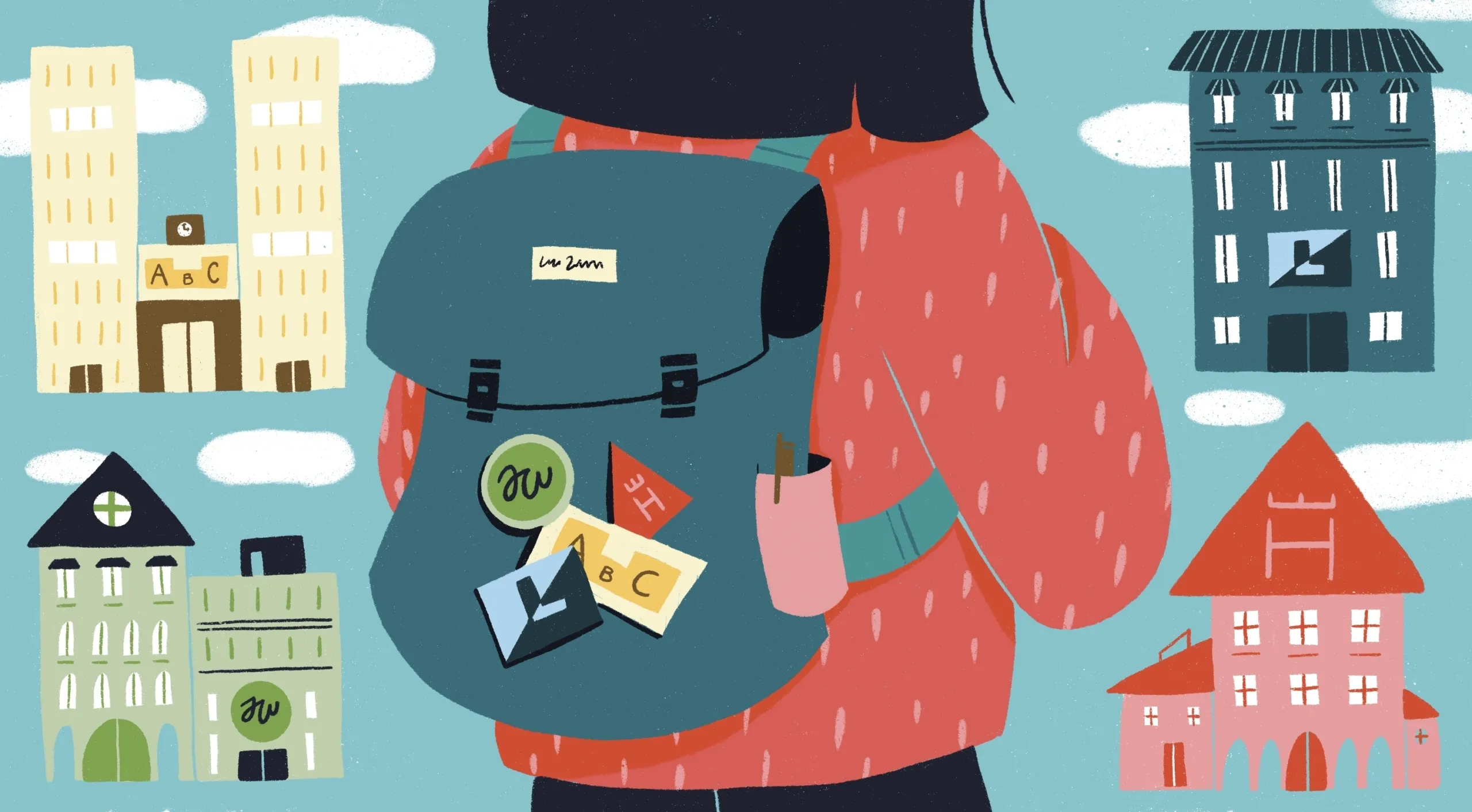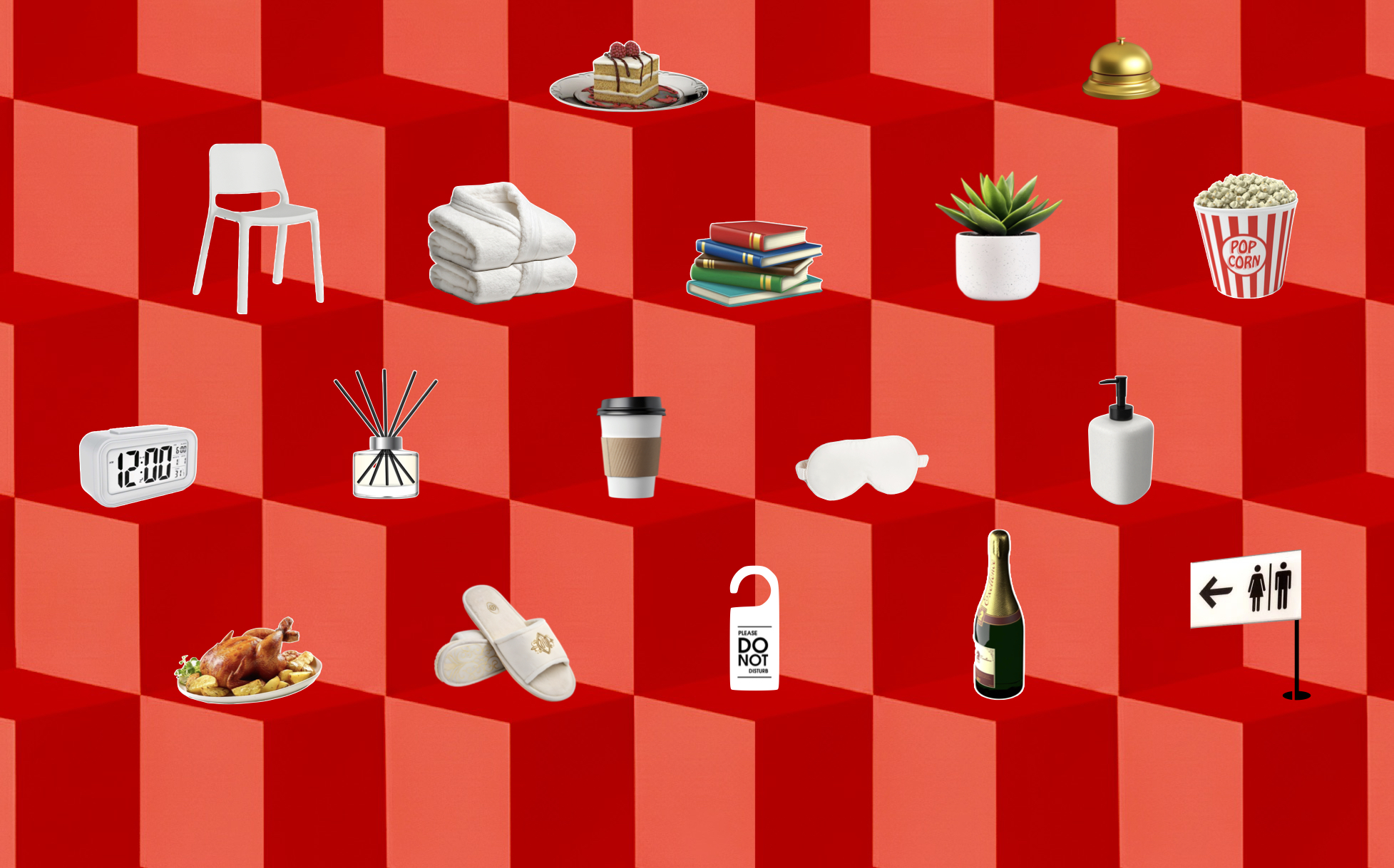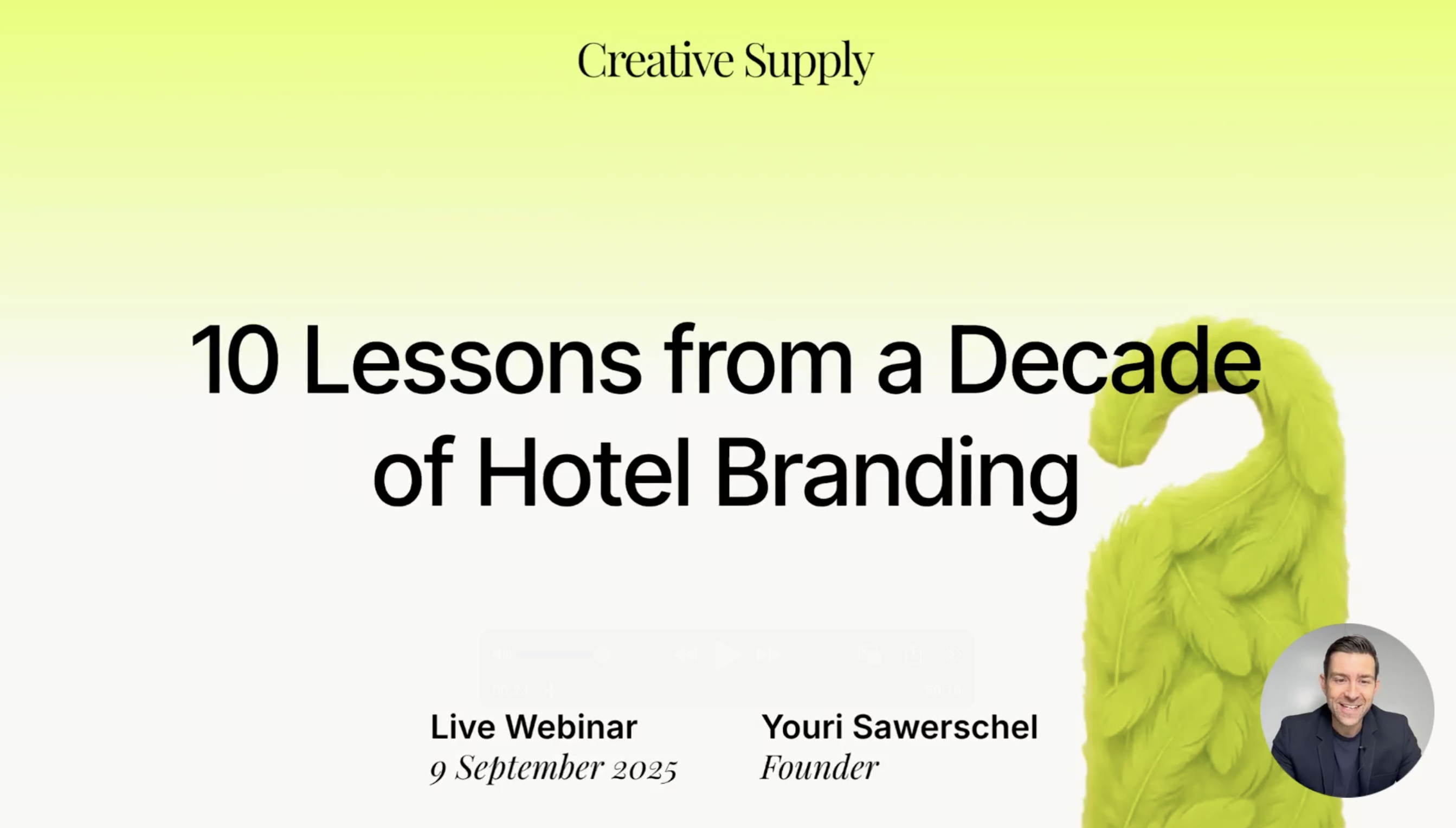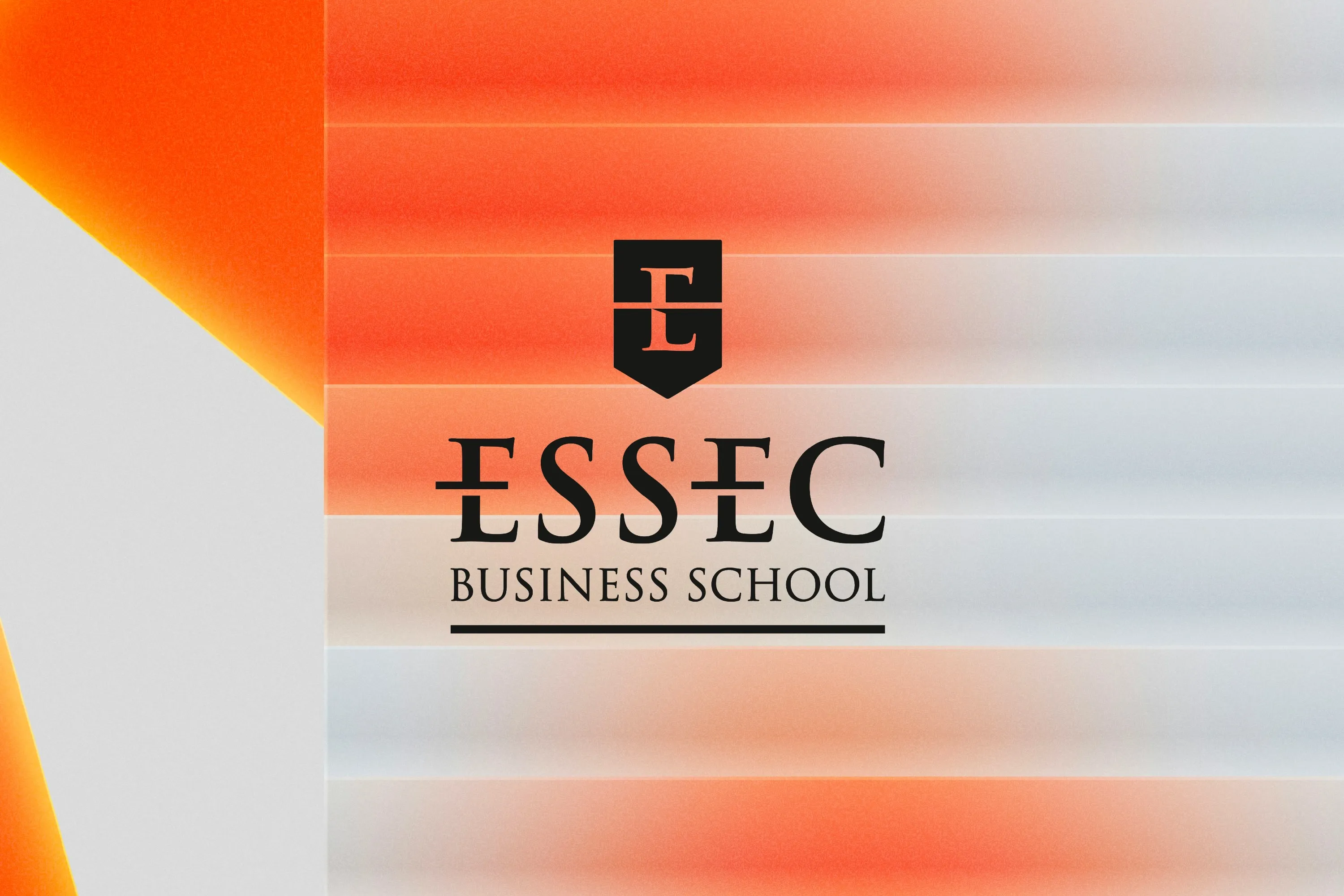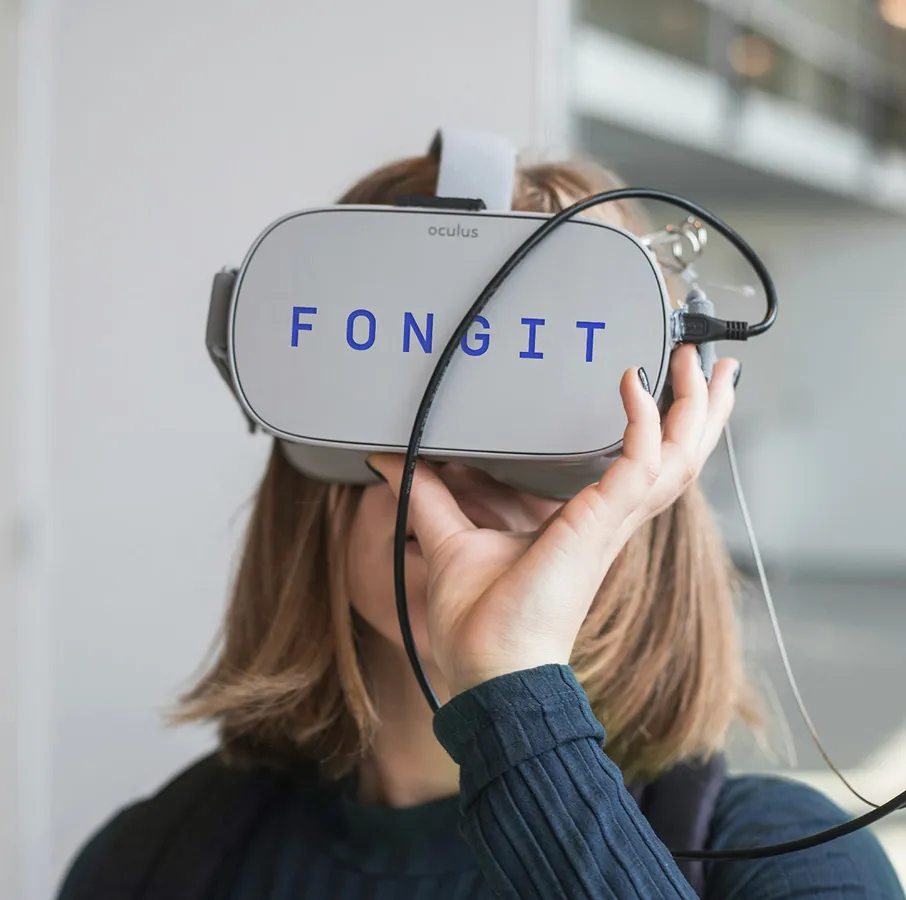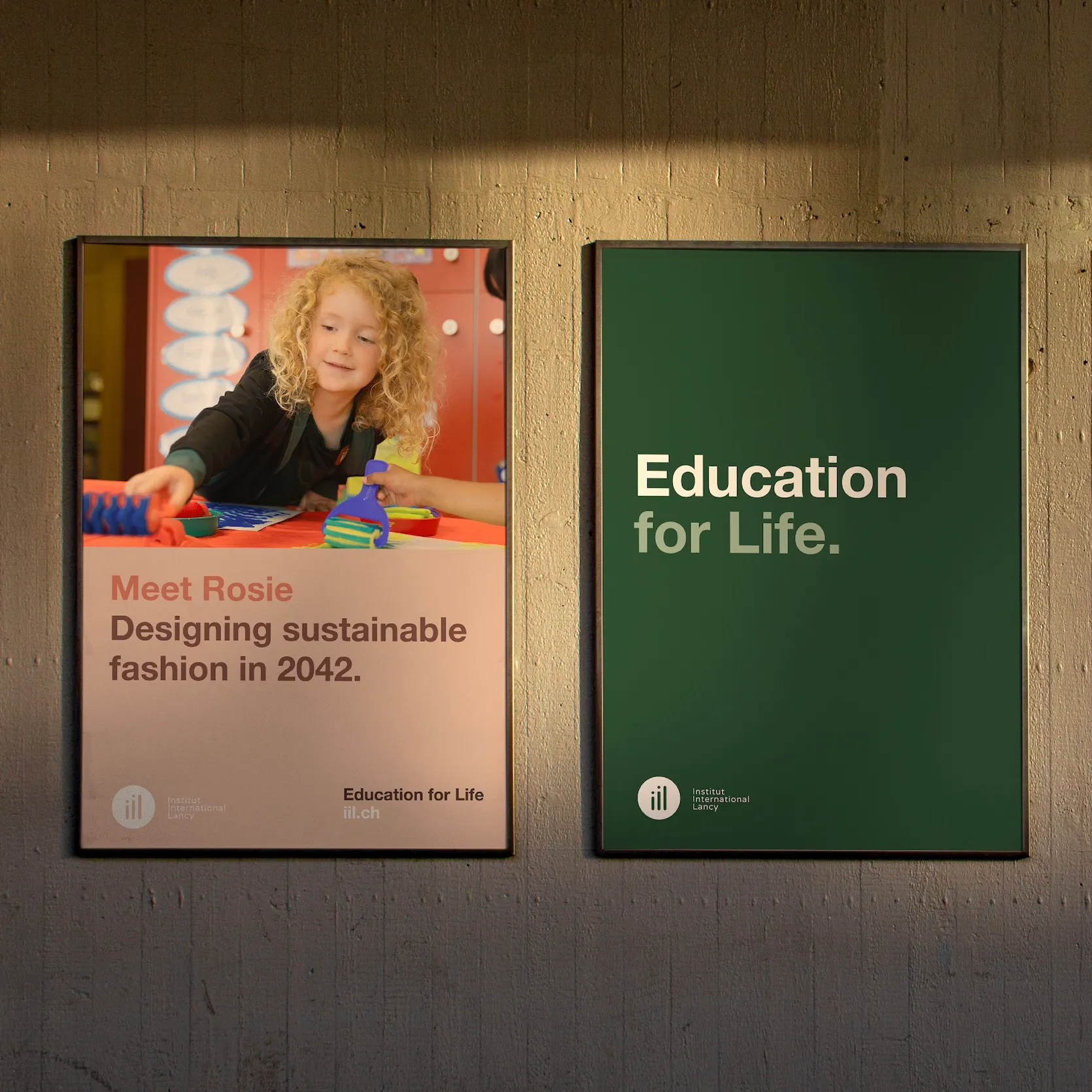Education Experience Design: Turning Campuses into Brand Assets
The engagement race is real. Why should anyone leave their screen for your campus? Educational institutions that treat every interaction as part of a branded ecosystem gain the edge.
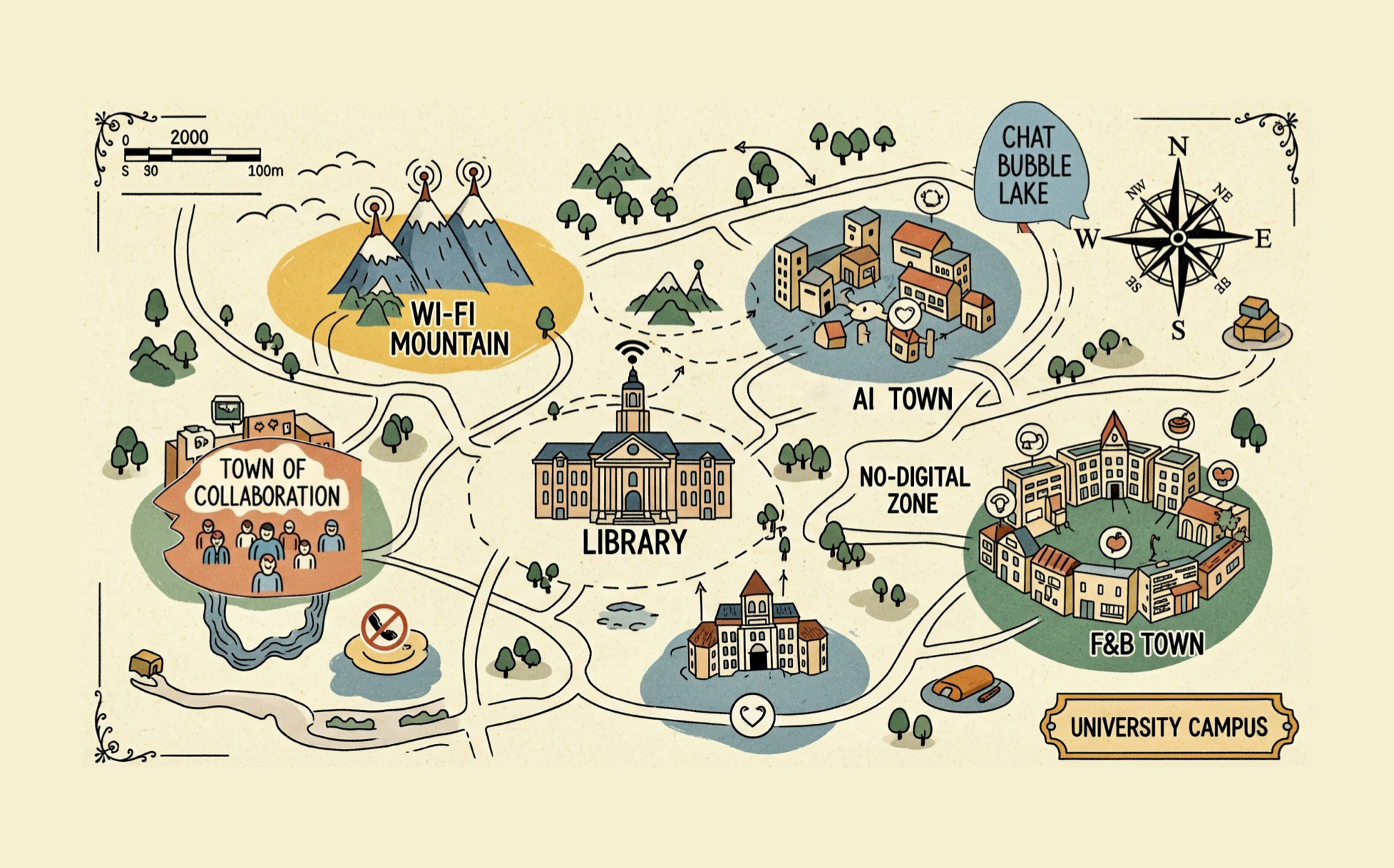
Universities and schools are no longer judged solely on academic excellence. Today, the physical and digital experience of a campus has become a decisive factor in attracting students, retaining staff, and building institutional reputation. Just as businesses invest in workplace experience design to shape culture and productivity, education leaders must now view their campuses as strategic assets — orchestrated environments where branding, customer experience, and digital design come together to define how people live, learn, and belong.
Experience design in education goes beyond architecture or landscaping. It’s about designing journeys: from the moment a prospective student explores a university website, to their first day on campus, to the alumni dinner decades later. With AI rapidly transforming how students learn and interact, campuses must offer more than functional facilities; they must deliver a cohesive, branded experience that inspires trust, engagement, and pride.
What is Campus Experience Design?
Campus experience design treats the university or school environment as a holistic ecosystem where physical, digital, and human elements converge. It acknowledges that every touchpoint communicates the institution’s brand, shapes perceptions, and creates emotional connections.
This extends well beyond lecture halls. Experience design considers:
- How students and staff navigate spaces
- The role of sound, light, and materials in shaping mood
- The way digital systems (apps, portals, signage) streamline journeys
- How branding is expressed across campus, from building names to event programming
- How students, educators, and visitors interact, and how these interactions reflect institutional values.
The result is not just a more beautiful campus, but a branded environment that fosters community, learning, and loyalty.
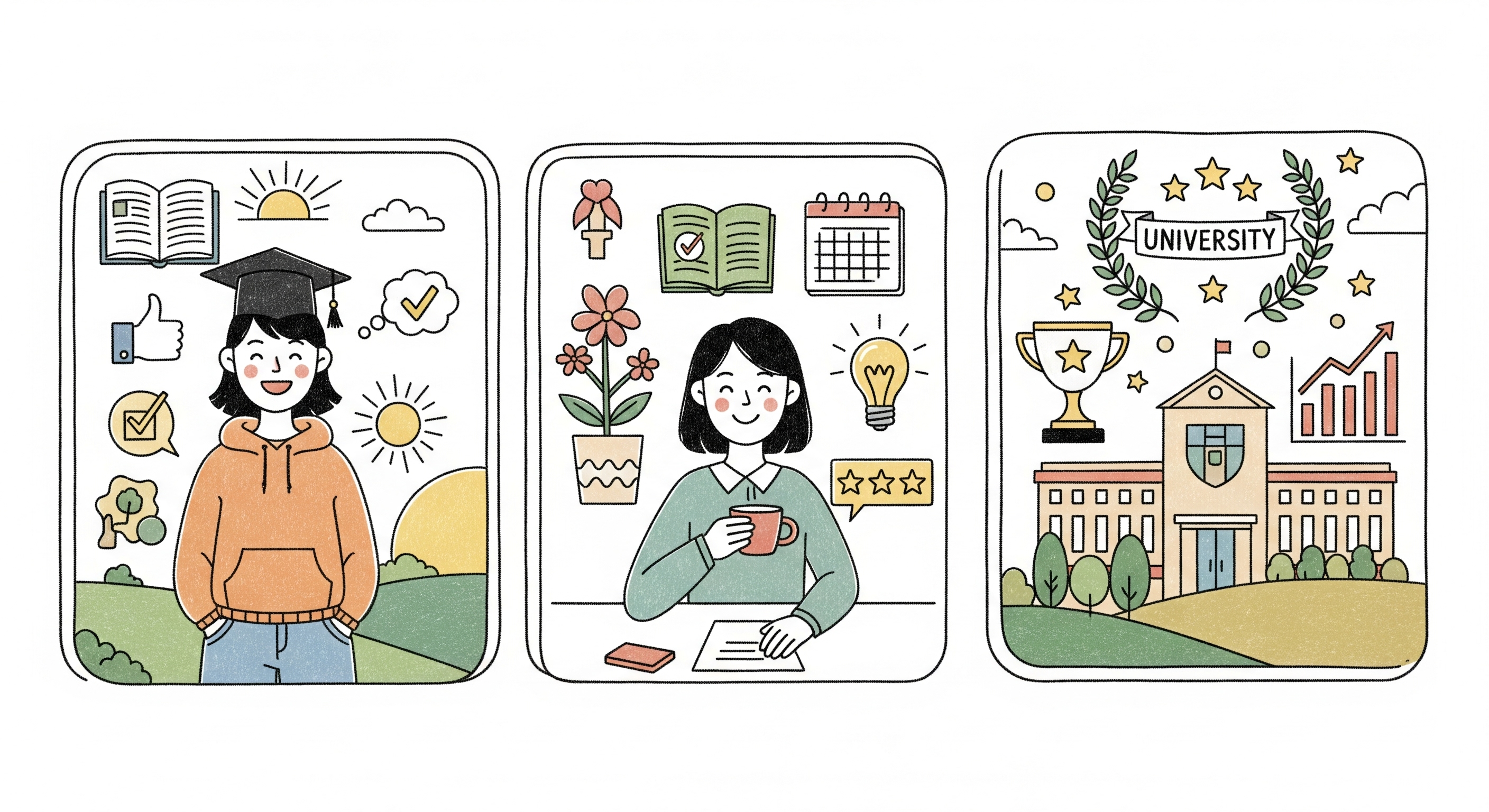
Why It Matters Now
Education faces a new paradigm. Remote learning has broken the monopoly of physical campuses, AI has altered how students absorb knowledge, and younger generations expect seamless, consumer-grade experiences. Against this backdrop, a well-designed campus experience becomes a competitive advantage.
- For students: It influences enrolment decisions and overall satisfaction.
- For staff: It improves well-being and productivity.
- For institutions: It reinforces reputation and creates a powerful alignment between brand promise and lived reality.
A university that promotes innovation but offers outdated facilities, or one that claims inclusivity but makes accessibility an afterthought, undermines its credibility. Campus experience design ensures the brand is not just communicated, but lived every day.
Three Strategic Principles for Campus Experience Design

1. Start with Human Behaviour, Not Buildings
Designing a successful campus experience starts with understanding people: their needs, frustrations, and aspirations. Students don’t only come to campus to attend lectures; they come to socialise, recharge, seek support, or simply find a quiet place to focus.
Traditional design focuses on demographics (students, faculty, visitors). Campus experience design goes deeper, building behavioural archetypes that recognise different states of being:
- The student rushing between classes needing fast navigation tools
- The researcher seeking silence and deep focus
- The international student searching for belonging and community
- The alumnus returning for a networking event.
This behavioural lens ensures spaces, services, and digital touchpoints respond flexibly to shifting needs, instead of forcing people into rigid patterns. In practice, this may mean creating multi-use areas that support both focused study and collaborative projects, or designing branded digital interfaces that adjust dynamically to user preferences.
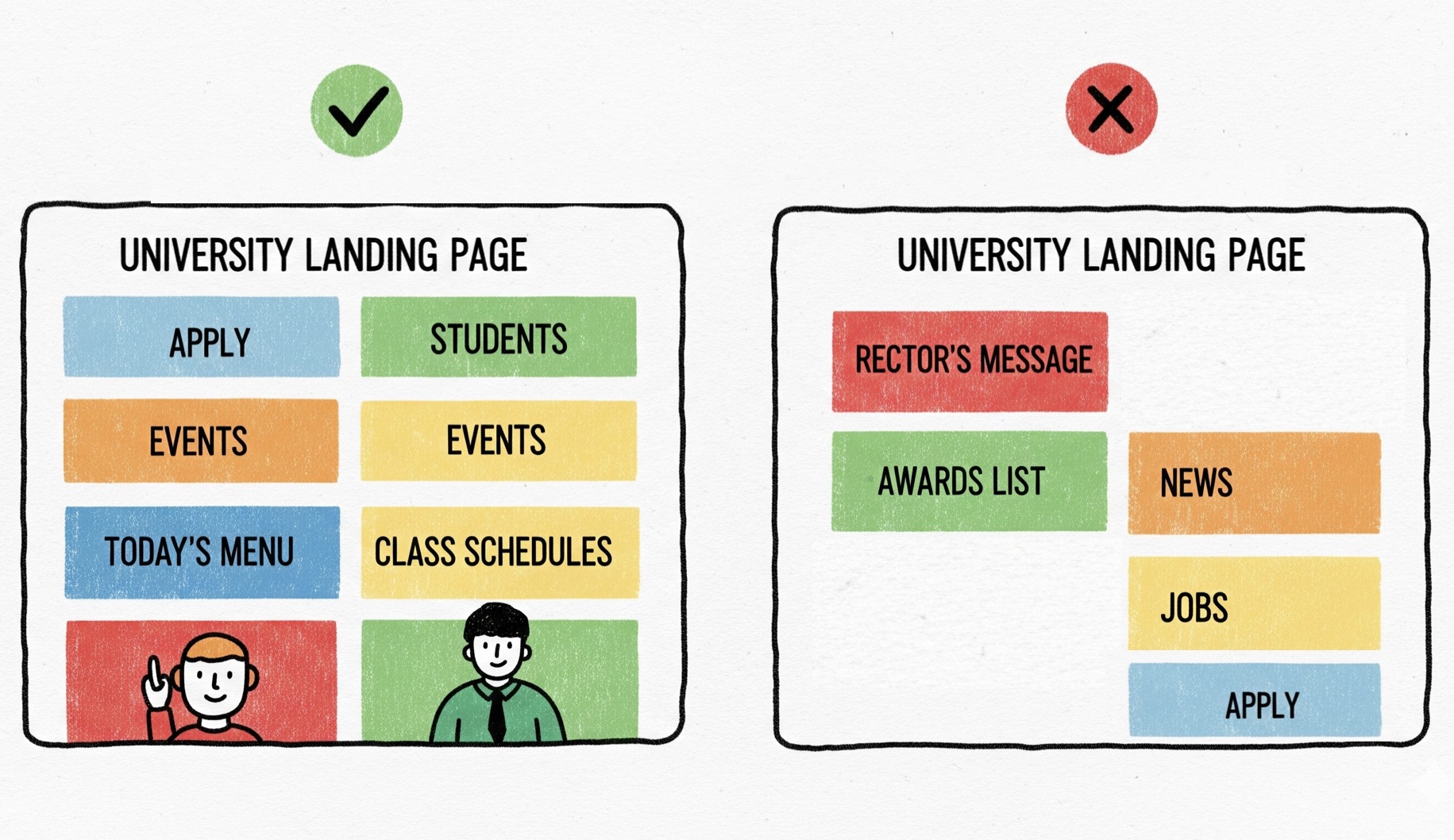
2. Think in Journeys, Not Facilities
Students don’t experience a campus as isolated buildings; they experience it as a journey. From the bus stop to the library, from the cafeteria to the digital learning portal, every transition counts.
Designing a successful campus experience takes into account the emotional journey of those involved. Consider, for example, the experience of a prospective student from the moment they first browse the institution’s website. Does the digital design reflect the energy of the campus? Does the signage upon arrival support a sense of orientation and welcome? Does the physical environment reinforce the brand story promised in marketing?
One powerful shift is to treat campuses as narratives unfolding over time. A library is not only a collection of study tables; it’s part of a larger story about knowledge. A cafeteria is not just a dining hall; it’s a stage for community building. By designing these journeys with intentionality, education leaders transform functional spaces into branded experiences that shape memory and loyalty.
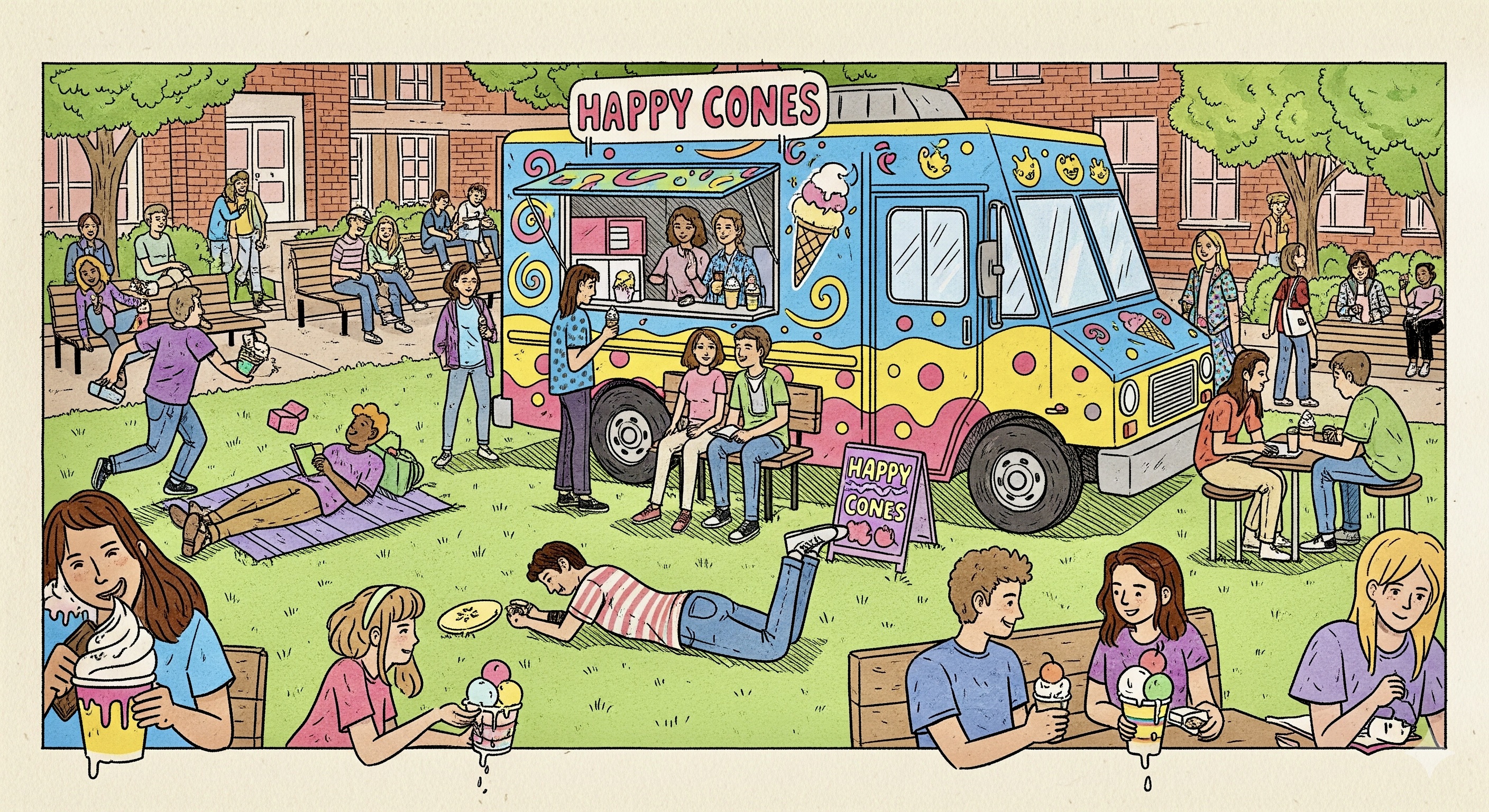
3. Embrace Iteration and Dynamic Experience
Unlike buildings, experiences evolve. Institutions that treat campus design as a one-off project risk irrelevance in the face of shifting expectations and technological change. Your experience design must treat the campus as a marathon, not a sprint: a living platform that grows, adapts, and continuously engages.
Ongoing feedback is central. Data-driven insights can reveal patterns of campus interaction and behaviour: how spaces are used at different times, how digital platforms support or frustrate learning, which events create lasting engagement, which activities resonate, and where friction occurs. Use this data to refine experiences, update layouts, and introduce new offerings that keep the campus vibrant.
Thinking of the campus as a dynamic platform can create reasons for people to return and explore. For example:
- A pop-up ice cream truck on a sunny day turns an ordinary courtyard into a social hub
- Temporary interactive exhibitions or skill-sharing workshops provide discovery opportunities while encouraging peer interaction
- A rotating café or market stall introduces novelty and connection points, transforming circulation paths into moments of engagement.
By layering small, evolving experiences, campuses become living ecosystems. Students and staff can discover new journeys, encounter unexpected interactions, and build connections that are impossible to replicate online. Iteration, feedback, and dynamic touchpoints make the campus more than a set of spaces. It becomes a continuously engaging environment where every visit offers something new.
Campus Experience as a Branding Asset
The most successful institutions treat campus experience not as infrastructure, but as brand expression. Every detail, from architectural lines to app interfaces, communicates who they are and what they stand for.
- Branding ensures consistency across physical and digital touchpoints,
- Campus experience design translates abstract values like “innovation” or “community” into lived realities,
- Digital design provides the glue, creating seamless connections between in-person and online life.
This alignment elevates campuses from being serviceable spaces to becoming signature experiences that attract talent, build reputation, and create lifelong loyalty among alumni.
Final Thoughts
For education leaders, the challenge is clear: move beyond thinking in terms of buildings and facilities, and start designing campus experiences as holistic, branded ecosystems. A strategically designed campus communicates brand identity, supports learning, and strengthens community — while integrating digital solutions that keep pace with change.
The educational institutions that succeed will be those that design not just for today’s students, but for tomorrow’s expectations. Because in education, as in business, experience is no longer a byproduct. It is the product.
Looking to Revitalise Your Education Brand Experience?
At Creative Supply, we help educational institutions build distinctive brand identities and experiences that prepare them for the future.
👉 Contact us to discuss how we can help to take your education brand to the next level.
Education Experience Design: Turning Campuses into Brand Assets

Universities and schools are no longer judged solely on academic excellence. Today, the physical and digital experience of a campus has become a decisive factor in attracting students, retaining staff, and building institutional reputation. Just as businesses invest in workplace experience design to shape culture and productivity, education leaders must now view their campuses as strategic assets — orchestrated environments where branding, customer experience, and digital design come together to define how people live, learn, and belong.
Experience design in education goes beyond architecture or landscaping. It’s about designing journeys: from the moment a prospective student explores a university website, to their first day on campus, to the alumni dinner decades later. With AI rapidly transforming how students learn and interact, campuses must offer more than functional facilities; they must deliver a cohesive, branded experience that inspires trust, engagement, and pride.
What is Campus Experience Design?
Campus experience design treats the university or school environment as a holistic ecosystem where physical, digital, and human elements converge. It acknowledges that every touchpoint communicates the institution’s brand, shapes perceptions, and creates emotional connections.
This extends well beyond lecture halls. Experience design considers:
- How students and staff navigate spaces
- The role of sound, light, and materials in shaping mood
- The way digital systems (apps, portals, signage) streamline journeys
- How branding is expressed across campus, from building names to event programming
- How students, educators, and visitors interact, and how these interactions reflect institutional values.
The result is not just a more beautiful campus, but a branded environment that fosters community, learning, and loyalty.

Why It Matters Now
Education faces a new paradigm. Remote learning has broken the monopoly of physical campuses, AI has altered how students absorb knowledge, and younger generations expect seamless, consumer-grade experiences. Against this backdrop, a well-designed campus experience becomes a competitive advantage.
- For students: It influences enrolment decisions and overall satisfaction.
- For staff: It improves well-being and productivity.
- For institutions: It reinforces reputation and creates a powerful alignment between brand promise and lived reality.
A university that promotes innovation but offers outdated facilities, or one that claims inclusivity but makes accessibility an afterthought, undermines its credibility. Campus experience design ensures the brand is not just communicated, but lived every day.
Three Strategic Principles for Campus Experience Design

1. Start with Human Behaviour, Not Buildings
Designing a successful campus experience starts with understanding people: their needs, frustrations, and aspirations. Students don’t only come to campus to attend lectures; they come to socialise, recharge, seek support, or simply find a quiet place to focus.
Traditional design focuses on demographics (students, faculty, visitors). Campus experience design goes deeper, building behavioural archetypes that recognise different states of being:
- The student rushing between classes needing fast navigation tools
- The researcher seeking silence and deep focus
- The international student searching for belonging and community
- The alumnus returning for a networking event.
This behavioural lens ensures spaces, services, and digital touchpoints respond flexibly to shifting needs, instead of forcing people into rigid patterns. In practice, this may mean creating multi-use areas that support both focused study and collaborative projects, or designing branded digital interfaces that adjust dynamically to user preferences.

2. Think in Journeys, Not Facilities
Students don’t experience a campus as isolated buildings; they experience it as a journey. From the bus stop to the library, from the cafeteria to the digital learning portal, every transition counts.
Designing a successful campus experience takes into account the emotional journey of those involved. Consider, for example, the experience of a prospective student from the moment they first browse the institution’s website. Does the digital design reflect the energy of the campus? Does the signage upon arrival support a sense of orientation and welcome? Does the physical environment reinforce the brand story promised in marketing?
One powerful shift is to treat campuses as narratives unfolding over time. A library is not only a collection of study tables; it’s part of a larger story about knowledge. A cafeteria is not just a dining hall; it’s a stage for community building. By designing these journeys with intentionality, education leaders transform functional spaces into branded experiences that shape memory and loyalty.

3. Embrace Iteration and Dynamic Experience
Unlike buildings, experiences evolve. Institutions that treat campus design as a one-off project risk irrelevance in the face of shifting expectations and technological change. Your experience design must treat the campus as a marathon, not a sprint: a living platform that grows, adapts, and continuously engages.
Ongoing feedback is central. Data-driven insights can reveal patterns of campus interaction and behaviour: how spaces are used at different times, how digital platforms support or frustrate learning, which events create lasting engagement, which activities resonate, and where friction occurs. Use this data to refine experiences, update layouts, and introduce new offerings that keep the campus vibrant.
Thinking of the campus as a dynamic platform can create reasons for people to return and explore. For example:
- A pop-up ice cream truck on a sunny day turns an ordinary courtyard into a social hub
- Temporary interactive exhibitions or skill-sharing workshops provide discovery opportunities while encouraging peer interaction
- A rotating café or market stall introduces novelty and connection points, transforming circulation paths into moments of engagement.
By layering small, evolving experiences, campuses become living ecosystems. Students and staff can discover new journeys, encounter unexpected interactions, and build connections that are impossible to replicate online. Iteration, feedback, and dynamic touchpoints make the campus more than a set of spaces. It becomes a continuously engaging environment where every visit offers something new.
Campus Experience as a Branding Asset
The most successful institutions treat campus experience not as infrastructure, but as brand expression. Every detail, from architectural lines to app interfaces, communicates who they are and what they stand for.
- Branding ensures consistency across physical and digital touchpoints,
- Campus experience design translates abstract values like “innovation” or “community” into lived realities,
- Digital design provides the glue, creating seamless connections between in-person and online life.
This alignment elevates campuses from being serviceable spaces to becoming signature experiences that attract talent, build reputation, and create lifelong loyalty among alumni.
Final Thoughts
For education leaders, the challenge is clear: move beyond thinking in terms of buildings and facilities, and start designing campus experiences as holistic, branded ecosystems. A strategically designed campus communicates brand identity, supports learning, and strengthens community — while integrating digital solutions that keep pace with change.
The educational institutions that succeed will be those that design not just for today’s students, but for tomorrow’s expectations. Because in education, as in business, experience is no longer a byproduct. It is the product.
Looking to Revitalise Your Education Brand Experience?
At Creative Supply, we help educational institutions build distinctive brand identities and experiences that prepare them for the future.
👉 Contact us to discuss how we can help to take your education brand to the next level.


Education Experience Design: Turning Campuses into Brand Assets
The engagement race is real. Why should anyone leave their screen for your campus? Educational institutions that treat every interaction as part of a branded ecosystem gain the edge.
Universities and schools are no longer judged solely on academic excellence. Today, the physical and digital experience of a campus has become a decisive factor in attracting students, retaining staff, and building institutional reputation. Just as businesses invest in workplace experience design to shape culture and productivity, education leaders must now view their campuses as strategic assets — orchestrated environments where branding, customer experience, and digital design come together to define how people live, learn, and belong.
Experience design in education goes beyond architecture or landscaping. It’s about designing journeys: from the moment a prospective student explores a university website, to their first day on campus, to the alumni dinner decades later. With AI rapidly transforming how students learn and interact, campuses must offer more than functional facilities; they must deliver a cohesive, branded experience that inspires trust, engagement, and pride.
What is Campus Experience Design?
Campus experience design treats the university or school environment as a holistic ecosystem where physical, digital, and human elements converge. It acknowledges that every touchpoint communicates the institution’s brand, shapes perceptions, and creates emotional connections.
This extends well beyond lecture halls. Experience design considers:
- How students and staff navigate spaces
- The role of sound, light, and materials in shaping mood
- The way digital systems (apps, portals, signage) streamline journeys
- How branding is expressed across campus, from building names to event programming
- How students, educators, and visitors interact, and how these interactions reflect institutional values.
The result is not just a more beautiful campus, but a branded environment that fosters community, learning, and loyalty.

Why It Matters Now
Education faces a new paradigm. Remote learning has broken the monopoly of physical campuses, AI has altered how students absorb knowledge, and younger generations expect seamless, consumer-grade experiences. Against this backdrop, a well-designed campus experience becomes a competitive advantage.
- For students: It influences enrolment decisions and overall satisfaction.
- For staff: It improves well-being and productivity.
- For institutions: It reinforces reputation and creates a powerful alignment between brand promise and lived reality.
A university that promotes innovation but offers outdated facilities, or one that claims inclusivity but makes accessibility an afterthought, undermines its credibility. Campus experience design ensures the brand is not just communicated, but lived every day.
Three Strategic Principles for Campus Experience Design

1. Start with Human Behaviour, Not Buildings
Designing a successful campus experience starts with understanding people: their needs, frustrations, and aspirations. Students don’t only come to campus to attend lectures; they come to socialise, recharge, seek support, or simply find a quiet place to focus.
Traditional design focuses on demographics (students, faculty, visitors). Campus experience design goes deeper, building behavioural archetypes that recognise different states of being:
- The student rushing between classes needing fast navigation tools
- The researcher seeking silence and deep focus
- The international student searching for belonging and community
- The alumnus returning for a networking event.
This behavioural lens ensures spaces, services, and digital touchpoints respond flexibly to shifting needs, instead of forcing people into rigid patterns. In practice, this may mean creating multi-use areas that support both focused study and collaborative projects, or designing branded digital interfaces that adjust dynamically to user preferences.

2. Think in Journeys, Not Facilities
Students don’t experience a campus as isolated buildings; they experience it as a journey. From the bus stop to the library, from the cafeteria to the digital learning portal, every transition counts.
Designing a successful campus experience takes into account the emotional journey of those involved. Consider, for example, the experience of a prospective student from the moment they first browse the institution’s website. Does the digital design reflect the energy of the campus? Does the signage upon arrival support a sense of orientation and welcome? Does the physical environment reinforce the brand story promised in marketing?
One powerful shift is to treat campuses as narratives unfolding over time. A library is not only a collection of study tables; it’s part of a larger story about knowledge. A cafeteria is not just a dining hall; it’s a stage for community building. By designing these journeys with intentionality, education leaders transform functional spaces into branded experiences that shape memory and loyalty.

3. Embrace Iteration and Dynamic Experience
Unlike buildings, experiences evolve. Institutions that treat campus design as a one-off project risk irrelevance in the face of shifting expectations and technological change. Your experience design must treat the campus as a marathon, not a sprint: a living platform that grows, adapts, and continuously engages.
Ongoing feedback is central. Data-driven insights can reveal patterns of campus interaction and behaviour: how spaces are used at different times, how digital platforms support or frustrate learning, which events create lasting engagement, which activities resonate, and where friction occurs. Use this data to refine experiences, update layouts, and introduce new offerings that keep the campus vibrant.
Thinking of the campus as a dynamic platform can create reasons for people to return and explore. For example:
- A pop-up ice cream truck on a sunny day turns an ordinary courtyard into a social hub
- Temporary interactive exhibitions or skill-sharing workshops provide discovery opportunities while encouraging peer interaction
- A rotating café or market stall introduces novelty and connection points, transforming circulation paths into moments of engagement.
By layering small, evolving experiences, campuses become living ecosystems. Students and staff can discover new journeys, encounter unexpected interactions, and build connections that are impossible to replicate online. Iteration, feedback, and dynamic touchpoints make the campus more than a set of spaces. It becomes a continuously engaging environment where every visit offers something new.
Campus Experience as a Branding Asset
The most successful institutions treat campus experience not as infrastructure, but as brand expression. Every detail, from architectural lines to app interfaces, communicates who they are and what they stand for.
- Branding ensures consistency across physical and digital touchpoints,
- Campus experience design translates abstract values like “innovation” or “community” into lived realities,
- Digital design provides the glue, creating seamless connections between in-person and online life.
This alignment elevates campuses from being serviceable spaces to becoming signature experiences that attract talent, build reputation, and create lifelong loyalty among alumni.
Final Thoughts
For education leaders, the challenge is clear: move beyond thinking in terms of buildings and facilities, and start designing campus experiences as holistic, branded ecosystems. A strategically designed campus communicates brand identity, supports learning, and strengthens community — while integrating digital solutions that keep pace with change.
The educational institutions that succeed will be those that design not just for today’s students, but for tomorrow’s expectations. Because in education, as in business, experience is no longer a byproduct. It is the product.
Looking to Revitalise Your Education Brand Experience?
At Creative Supply, we help educational institutions build distinctive brand identities and experiences that prepare them for the future.
👉 Contact us to discuss how we can help to take your education brand to the next level.
